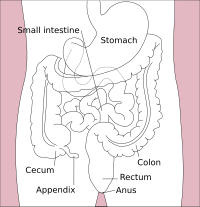
The potential role of spherocrystals in the detoxification of essential trace metals following exposure to Cu and Zn in the fighting conch Strombus (Lobatus) pugilis
Sign Up to like & getrecommendations! Published in 2018 at "BioMetals"
DOI: 10.1007/s10534-018-0114-6
Abstract: Crypt cells—one of the three cell types composing Strombidae digestive tubules—are characterized by the presence of numerous metal-containing phosphate granules termed spherocrystals. We explored the bioaccumulation and detoxification of metals in Strombidae by exposing wild… read more here.
Keywords: conch strombus; fighting conch; potential role; gland ... See more keywords

Genotoxic potential of copper oxide nanoparticles in the bivalve mollusk Mytilus trossulus
Sign Up to like & getrecommendations! Published in 2017 at "Journal of Ocean University of China"
DOI: 10.1007/s11802-017-3133-y
Abstract: Copper oxide nanoparticles (CuO-NPs) are among the most widely used metal oxide nanoparticles, which increases the chance of their being released into the marine environment. As the applications of these particles have increased in recent… read more here.
Keywords: mytilus trossulus; oxide nanoparticles; copper; copper oxide ... See more keywords

Identification and Characterization of a Glycoside Hydrolase Family 9 Member from the Digestive Gland of the Snail Achatina fulica
Sign Up to like & getrecommendations! Published in 2021 at "BioEnergy Research"
DOI: 10.1007/s12155-021-10303-2
Abstract: Biomass-degrading enzymes can aid the development of new technologies to increase the production efficiency of green fuels like ethanol. This study reports the identification and characterization of a novel glycoside hydrolase family 9 (GH9) member… read more here.
Keywords: digestive gland; hydrolase family; glycoside hydrolase; member digestive ... See more keywords

Microcystin-LR bioconcentration induces antioxidant responses in the digestive gland of two marine bivalves Crassostrea gigas and Mytilus edulis.
Sign Up to like & getrecommendations! Published in 2017 at "Aquatic toxicology"
DOI: 10.1016/j.aquatox.2017.05.003
Abstract: Microcystins (MCs) are a major group of potent cyanobacterial toxins found in freshwater and even brackish waterbodies. To understand the putative correlation between bioconcentration of MCs and antioxidant responses of the digestive gland of bivalves,… read more here.
Keywords: antioxidant responses; bioconcentration; crassostrea gigas; digestive gland ... See more keywords

Multi-biomarkers approach to the assessment of the southeastern Mediterranean Sea health status: Preliminary study on Stramonita haemastoma used as a bioindicator for metal contamination.
Sign Up to like & getrecommendations! Published in 2018 at "Chemosphere"
DOI: 10.1016/j.chemosphere.2018.05.118
Abstract: The present study aimed to evaluate the responses of different biochemicals parameters associated with environmental pollution in the digestive gland of the gastropod mollusc Stramonita haemastoma. Physiochemical parameters and trace metal elements (Copper (Cu), Zinc… read more here.
Keywords: multi biomarkers; study; stramonita haemastoma; digestive gland ... See more keywords

Effects of dietary Pb and Cd and their combination on lysosomal and tissue-level biomarkers and histopathology in digestive gland of the land snail, Cantareus apertus (Born, 1778).
Sign Up to like & getrecommendations! Published in 2018 at "Ecotoxicology and environmental safety"
DOI: 10.1016/j.ecoenv.2018.02.079
Abstract: The present study was aimed at determining cell and tissue-level biomarkers and histopathological alterations in the green garden snail, Cantareus apertus (Born, 1778), exposed to different nominal dietary concentrations of Pb (25, 100 and 2500 mg… read more here.
Keywords: tissue level; histopathology; tissue; level biomarkers ... See more keywords

The panpulmonate limpet Siphonaria lessonii Blainville, 1827 as a sentinel of contamination in coastal areas of Argentina
Sign Up to like & getrecommendations! Published in 2020 at "Ecological Indicators"
DOI: 10.1016/j.ecolind.2020.107075
Abstract: Abstract Although some studies have evaluated the use of Siphonaria lessonii as a bioindicator of pollution, no study has identified the effects of human activities on the digestive gland, which is the main centre of… read more here.
Keywords: digestive gland; contamination; sentinel contamination; siphonaria lessonii ... See more keywords

Metal bioaccumulation and detoxification processes in cephalopods: A review
Sign Up to like & getrecommendations! Published in 2017 at "Environmental Research"
DOI: 10.1016/j.envres.2017.02.003
Abstract: &NA; In recent decades, cephalopods have been shown to have very high capacities to accumulate most trace elements, regardless of whether they are essential (e.g., Cu and Zn) or non‐essential (e.g., Ag and Cd). Among… read more here.
Keywords: trace; detoxification processes; digestive gland; trace elements ... See more keywords

Effect of salinity on the bioaccumulation and depuration of cadmium in the pacific cupped oyster, Crassostrea gigas.
Sign Up to like & getrecommendations! Published in 2018 at "Environmental toxicology and pharmacology"
DOI: 10.1016/j.etap.2018.05.018
Abstract: As a euryhaline species, the oyster Crassostrea gigas can adapt rapid and dramatic salinity fluctuations, and show physiological mechanisms of adaption to tolerant salinity changes. They are continuously exposed to Cd because they are filter… read more here.
Keywords: oyster crassostrea; phase; depuration; salinity ... See more keywords

Season specific influence of projected ocean changes on the response to cadmium of stress-related genes in Mytilus galloprovincialis.
Sign Up to like & getrecommendations! Published in 2020 at "Marine environmental research"
DOI: 10.1016/j.marenvres.2020.105091
Abstract: Anthropogenic inputs of carbon dioxide in the atmosphere are driving ocean warming and acidification. The potential threat represented by these changes for marine species could be amplified in coastal areas, characterized by higher levels of… read more here.
Keywords: mytilus galloprovincialis; season specific; stress; cadmium ... See more keywords

A baseline study of the metallothioneins content in digestive gland of the Norway lobster Nephrops norvegicus from Northern Adriatic Sea: Body size, season, gender and metal specific variability.
Sign Up to like & getrecommendations! Published in 2018 at "Marine pollution bulletin"
DOI: 10.1016/j.marpolbul.2018.03.002
Abstract: Metallothioneins content was investigated in digestive gland of two wild-caught Norway lobster Nephrops norvegicus populations from the Northern Adriatic Sea, in relation to body size, season and gender. Concomitant accumulation of cadmium, mercury, arsenic, lead,… read more here.
Keywords: digestive gland; metallothioneins content; body size;